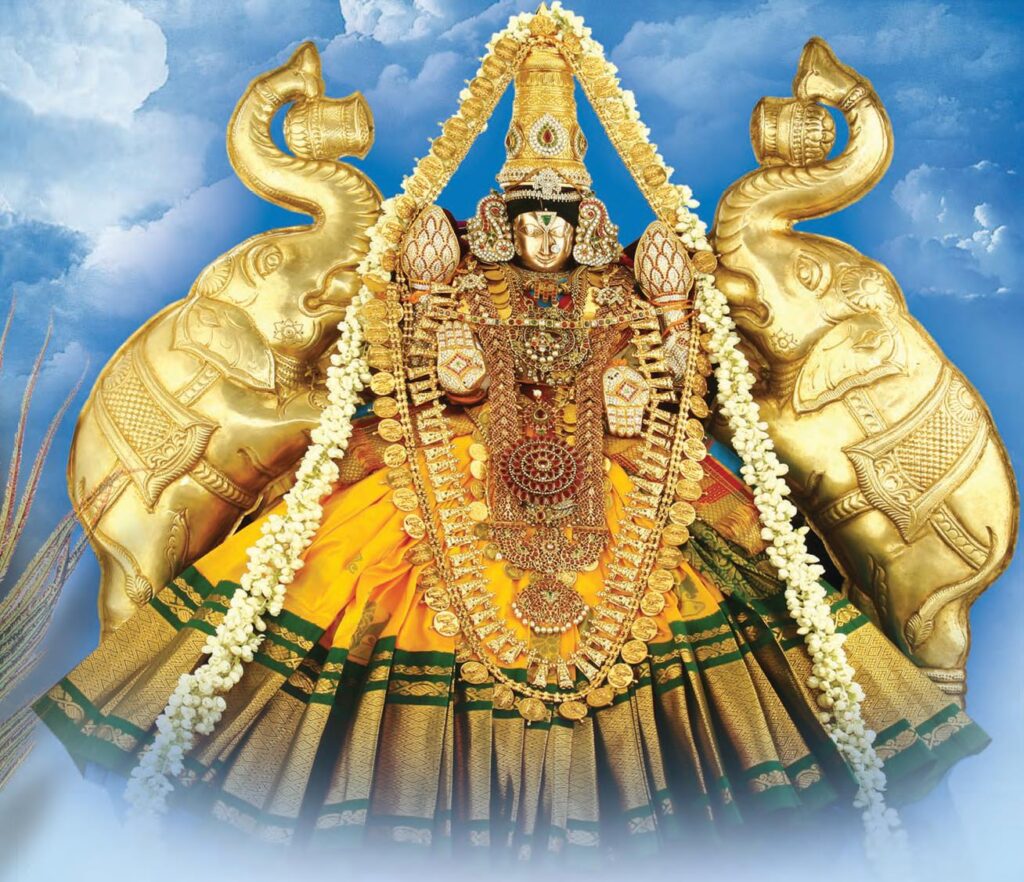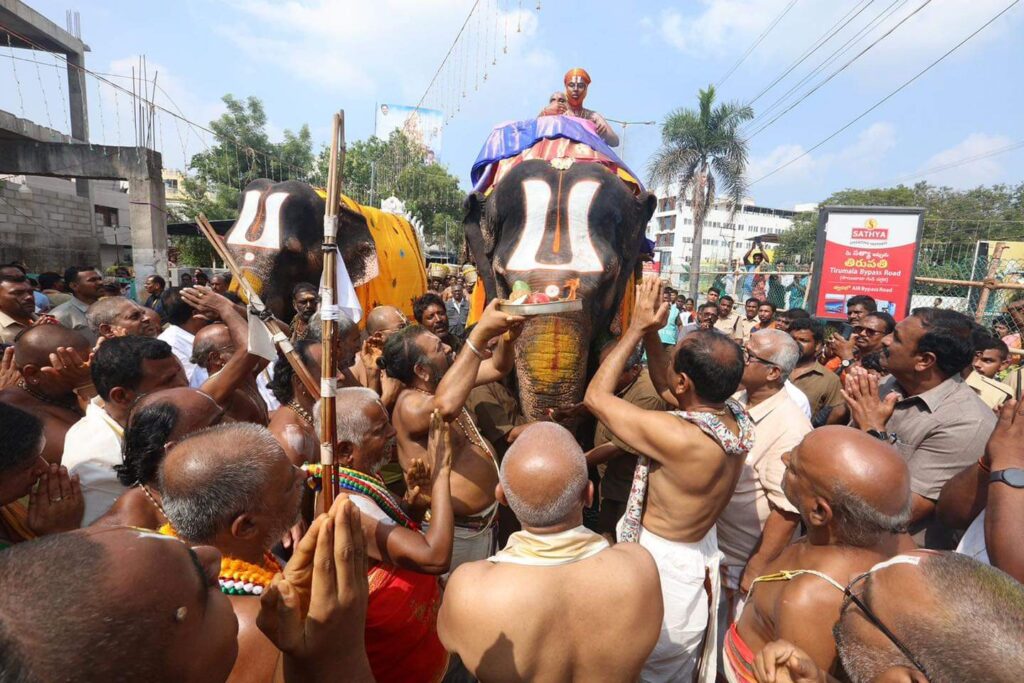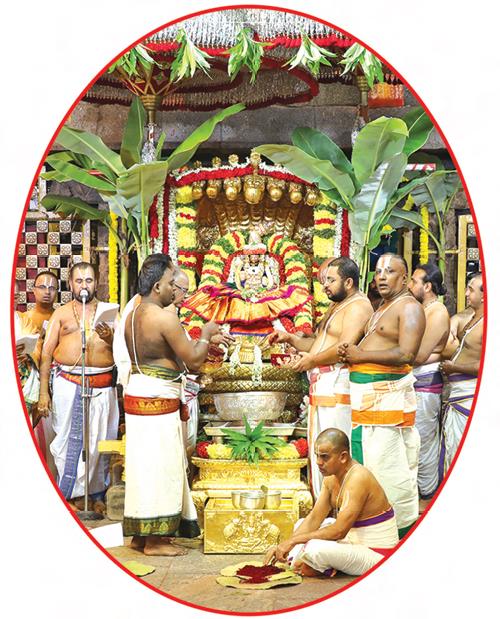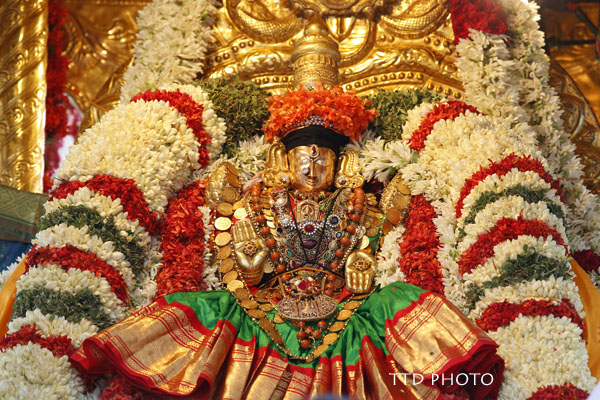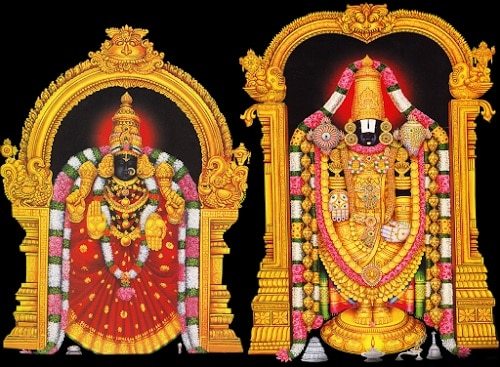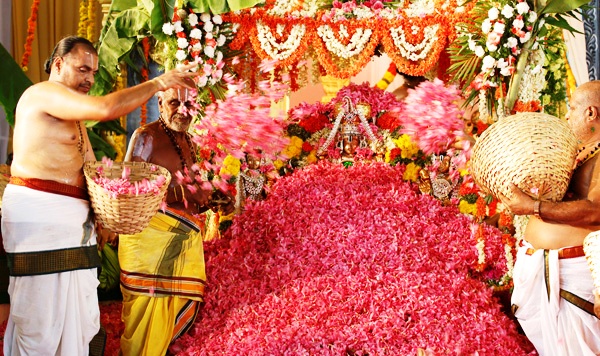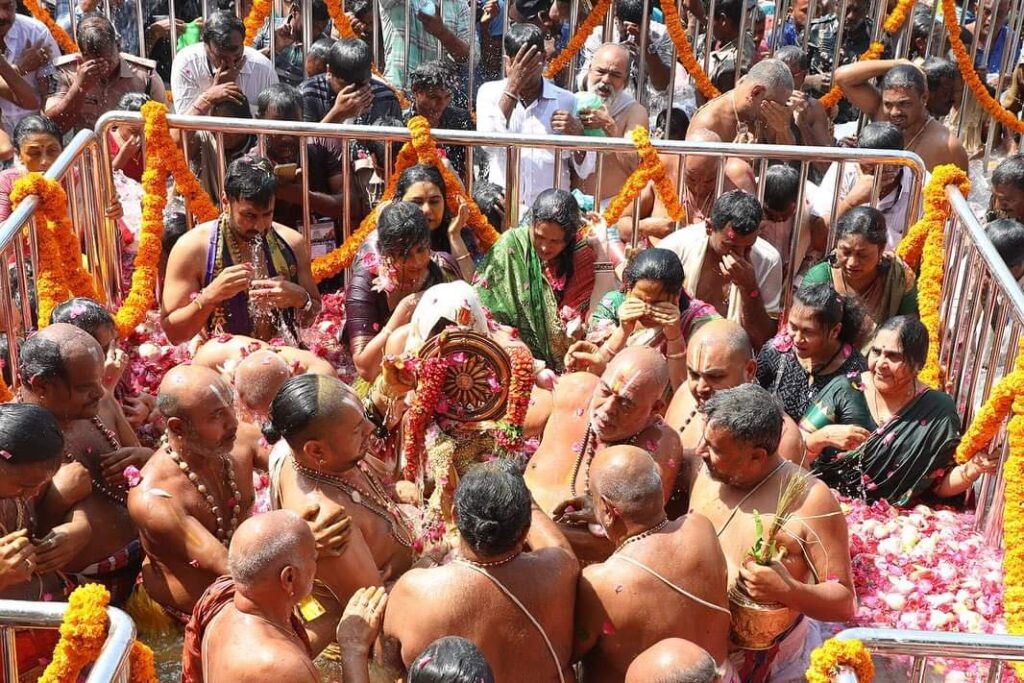Sri Suryanarayana Swamy Temple, Tiruchanur There are a few temples of Lord Suryanarayana Swamy in India. Among them, the temple in Tiruchanur is very ancient, historical and famous. Lord Sri Venkateswara Swamy Himself installed the deity and worshipped Him in Tiruchanur. Tiruchanur, the Divya Kshetram, is approx. at the distance of five kilometres away from Read More
Tag: Alarmel Mangapuram
Tiruchanur or Tiruchanoor(also known as Alamelu Mangapuram or Alarmel Mangapuram) is a suburb and neighbourhood of Tirupati and is located in the Tirupati district of the Indian state of Andhra Pradesh
The Miracle of Padma Sarovara
Goddess Mahalakshmi – Alamelu Manga – Holy Pond – Miracle of Padma Sarovara In the ancient holy land of Bharata Khanda, there were regions, which were famous by the names of kingdoms called Chappannar. There were 56 countries. Once upon a time, it was called Kambojadesam, named after the king Kamboja. But, over time, it Read More
Varalakshmi Vratam at Tiruchanur Sri Padmavati Ammavari Temple
Varalakshmi Vratam at Sri Padmavati Ammavari Temple Varalakshmi Vratam festival with grand festivity and faith is celebrated in the Tiruchanur Sri Padmavati Ammavari Temple also as a special annual event. The rituals of this festival are different in many aspects from the other normal rituals in the temple. The Process of Varalakshmi Vratam On this Read More
Manifestations of Goddess Lakshmi
Manifestations of Goddess Lakshmi One should be aware of Ashtalakshmis or the manifestations of Goddess Sri Lakshmi. Veda Lakshmi in TretaYuga A sage named Brahmarishi Kushadhvaja was fixated on the Vedas. He was apathetic towards the institution of marriage but enthusiastic about begetting Goddess Lakshmi. One day while pursuing the Vedas, the celestial Narthaki (dancer) Read More
Venkateswara’s ‘Saare’ to Sri Padmavathi Ammavaru
Article posted on Saptagiri Magazine by – Dr. Venkata Harshavardhan R.D. Sri Padmavathi Ammavari Kartika Brahmotsavams is a spectacular festival of Tiruchanur and Tirupati. Just as Tirumala Brahmotsavam ends with CHAKRA SNANAM, even Tiruchanur Kartika Brahmotsavam ends with a Chakrasnanam on the auspicious Panchami Teertha day known as ‘Panchami Theertham’. Saare – From Tirumala to Read More
Laksha Kumkumarchana at Padmavathi Temple – Tiruchanur
This article is about Laksha Kumkumarchana at Padmavathi Temple – Tiruchanur Sri Padmavathi Devi temple – Tiruchanur Goddess Padmavathi is the queen of Lord Srinivasa and enjoys a separate identity with equal status. The Goddess is inseparable and enjoys an equal position as she is a Purushakara or instrumental in protecting the devotees from the Read More
Chatusthanarchana – Tiruchanur
ChatusthanArchana Visesham – Tiruchanur The puja vidhi during Brahmotsavams are in the form of Chatusthanarchana (ritual). Every day during the annual fete, the Chatusthanarchana will be performed twice, both in the morning and in the evening at Sri Padmavathi Ammavari Temple. In the morning this ceremony is observed in Yagashala between 5 am to 6 Read More
Padmavati Devi – Legend
Goddess Padmavati Devi Goddess Padmavati Devi also known as ‘ALARMEL MANGA’, the consort of Lord Srinivasa, made Tiruchanur Her abode. She is glorified as the queen of the Universe. She represents the Lord’s Sankalpa (wish). The Divine Mother is concerned for the miserable plight of Her children (devotees) by appealing to the Lord to forgive Read More
Pushpayagam to Padmavati Devi
Pushpayagam (Yagam with Flowers) in Tiruchanur Pushpayagam is performed to Sri Padmavati Devi in Tiruchanur. This is an annual festival that is performed the day after the completion of the annual Brahmotsavam on the asterism of Karthika masa, on the day after Panchami Theertham. After the daily pujas, Goddess Sri Padmavati Devi is seated on Read More
Panchami Theertham Mahotsav
Panchami Theertham Tiruchanur is the sacred place where Lord Srinivasa did penance for 12 years to get back Padmavati Devi, who always remains in his heart. Sri Mahalakshmi left Vaikuntam angrily with the misdeed of sage Brighu. Sri Maha Vishnu himself dug the tank. He brought golden lotus flowers and planted them in the tank. Read More
